Selecting appropriate rescue equipment is critical for emergency response effectiveness. With years of manufacturing high-performance webbing for safety applications, we understand what makes rescue straps reliable when lives are at stake.
A rescue strap is a specialized safety device designed for secure personnel extraction from hazardous environments, featuring high-strength webbing (5,000-10,000 lbs breaking strength), reinforced attachment points, and application-specific designs. Available as confined space, hurtman, helicopter, and hasty rescue straps, each is engineered with specific materials and dimensions for different rescue scenarios
Below, we’ll examine rescue strap types, materials, and construction techniques while providing guidance on selecting the right strap for your specific safety requirements.
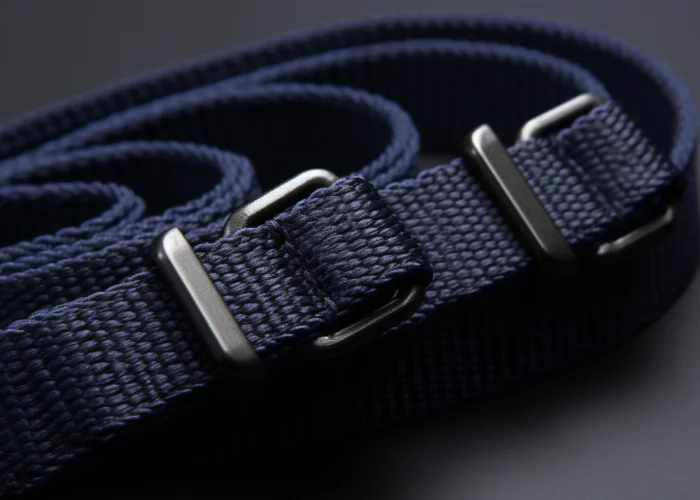

Webbing manufacturing expert with 15+ years of experience helping product developers build high-performance straps for industrial, medical, and outdoor use.
Rescue straps come in four main types: confined space rescue straps, hurtman rescue straps, helicopter rescue straps, and hasty rescue straps. Each type serves a specific rescue scenario with breaking strengths ranging from 4,000-10,000 lbs and specialized features designed for particular extraction challenges and environmental conditions.
Confined space rescue straps feature narrow profiles (1-2 inches wide) with multiple attachment points spaced 12-18 inches apart. These straps maintain victims in upright positions during vertical extractions from tunnels, tanks, and shafts, with standard lengths of 3-7 feet allowing navigation through restricted openings while providing secure body support.
Hurtman rescue straps incorporate wide padded sections (5.75 inches) that distribute pressure across 40-60% more surface area than standard straps. Designed specifically for pole-top rescues, these straps feature foam padding (0.5-1 inch thick) for preventing circulation restriction and include 3-5 reinforced attachment points rated for 6,000+ lbs of tensile strength.
Helicopter rescue straps utilize high-strength materials rated for 8,000-10,000 lbs breaking strength with specialized hardware for rapid connection. These straps incorporate multiple stabilization points to prevent victim rotation during aerial lifts and feature high-visibility colors (typically international orange or yellow) that remain visible at 500+ feet distances during emergency evacuations.
Hasty rescue straps provide simplified designs with 4-6 reinforced drag handles supporting 300+ lbs of horizontal dragging force. Primarily used for firefighter extraction, these straps measure 24-36 inches in length with heat-resistant materials withstanding temperatures up to 400°F for short durations, making them ideal for rapid deployment in emergency situations.
Used primarily for rescuing downed firefighters, these straps provide reinforced handles for dragging and hoisting, making them versatile for both firefighter and civilian rescues in emergency situations. Their simplified design allows for rapid deployment when time is critical, with durable construction that withstands extreme conditions and high heat environments.
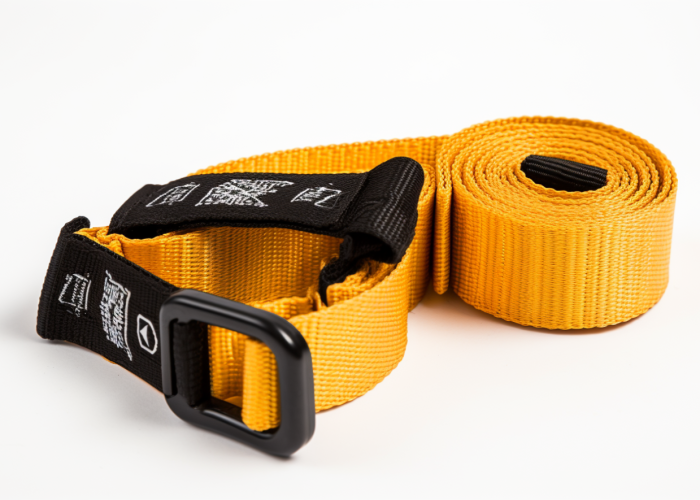
Rescue straps are made from nylon webbing, flame-retardant materials like Nomex and Kevlar, foam padding, and aluminum or steel hardware. Nylon webbing provides 6,000-8,000 lbs breaking strength for 1-inch straps, while specialized hardware components ensure secure connections during critical rescue operations.
Nylon webbing forms the primary structural component in 85% of rescue straps due to its 7:1 strength-to-weight ratio. This synthetic material provides breaking strengths of 6,000-8,000 lbs for 1-inch width straps while maintaining flexibility at temperatures from -40°F to 180°F, with specialized mil-spec versions offering up to 10,000 lbs capacity for technical rescue applications.
Flame-retardant rescue straps incorporate Nomex or Kevlar fibers that withstand direct flame contact for 12-15 seconds without structural failure. These specialized materials maintain 85-90% of their rated strength at temperatures up to 400°F, compared to standard nylon which loses 50% strength at 300°F, making them essential for firefighting applications and high-heat industrial rescue scenarios.
Rescue strap padding utilizes closed-cell EVA foam with 65-80% compression resistance to distribute pressure. Padding thickness ranges from 0.5-1 inch, reducing localized pressure by 40-60% compared to unpadded straps and preventing circulation restriction during extended suspension, with water-resistant properties that maintain functionality even when saturated.
Rescue strap hardware components feature aircraft-grade aluminum (7075-T6) or hardened steel alloys with breaking strengths 20% higher than the webbing they connect. D-rings typically measure 1.75-2.5 inches in diameter with load ratings of 5,000-12,000 lbs, while carabiners incorporate auto-locking gates requiring 3-4 distinct movements to prevent accidental opening during rescue operations.
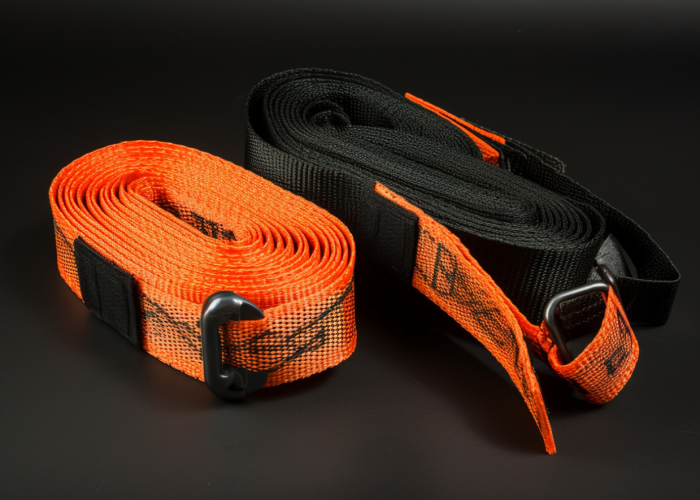
Rescue strap sizes range from 3-10+ feet in length and 1-5.75 inches in width, with specifications determined by rescue type. Confined space straps measure 3-7 feet, while technical extraction straps exceed 10 feet. Width varies from 1 inch for multi-loop designs to 5.75 inches for Hurtman Rescue Straps that require broader pressure distribution.
Rescue strap length requirements vary from 3 feet for personal extraction to 12+ feet for technical rescues. Confined space applications typically use 5-7 foot straps providing 150% of the required extraction distance as safety margin. The Anderson Rescue Solutions Multi-Loop design measures exactly 7 feet with attachment points every 12 inches, allowing for precise positioning during technical extractions.
Rescue strap width directly impacts pressure distribution and handling characteristics, ranging from 1-5.75 inches. Narrow straps (1-2 inches) distribute 4-6 psi of pressure during suspension, while wider designs like the 5.75-inch Hurtman Rescue Strap reduce pressure to 1.5-2 psi, decreasing risk of compartment syndrome by 65-70% during extended suspension scenarios.
Rescue strap load capacity increases by approximately 2,000 lbs per additional inch of width. Standard 1-inch nylon webbing supports 4,000-6,000 lbs, while 2-inch webbing handles 8,000-10,000 lbs under identical construction techniques. Industry safety standards require minimum 5:1 safety factors, meaning a 200-pound victim requires straps rated for at least 1,000 pounds of force.
Custom rescue strap specifications address unique operational requirements not met by standard designs. Specialized applications may require non-standard lengths (up to 25 feet), hybrid width configurations (narrow sections for routing, wider sections for body contact), or custom attachment point placements (typically at 8-12 inch intervals) to accommodate specific rescue protocols or equipment interfaces.

Rescue straps are made with both flat and tubular webbing, with selection depending on specific rescue applications. Flat webbing provides greater strength and stability for heavy-load rescues, while tubular webbing offers superior flexibility and handling for climbing and technical rescue operations requiring frequent manipulation of the strap.
Flat webbing delivers 10-15% higher breaking strength than equivalent tubular webbing while maintaining a lower profile against surfaces. This webbing style measures 1.2-1.5mm thick for 1-inch widths and distributes force more evenly across its entire width, making it ideal for applications like firefighting harnesses where loads of 600+ lbs must remain stable under tension.
Tubular webbing excels in flexibility with 30-40% greater bend radius than flat webbing of equivalent strength. The hollow construction measures 2.5-3mm thick for 1-inch widths and creates naturally rounded edges that reduce abrasion on both the webbing and contact points, making it preferable for applications requiring frequent manipulation across rough surfaces or around corners.
Flat webbing typically provides 6,000-7,000 lbs breaking strength for 1-inch widths compared to tubular webbing’s 4,000-6,000 lbs. This 15-25% strength advantage makes flat webbing the standard for critical rescue applications where maximum strength-to-width ratio is essential, especially in high-load scenarios exceeding 500 lbs or where system redundancy is limited.
Rescue applications determine optimal webbing type based on four key factors: required strength, handling frequency, edge contact, and hardware interaction. Flat webbing is selected for 65% of structural fire rescue applications due to strength requirements, while tubular webbing dominates 70% of technical rope rescue operations where flexibility and frequent manipulation are prioritized over maximum strength ratings.
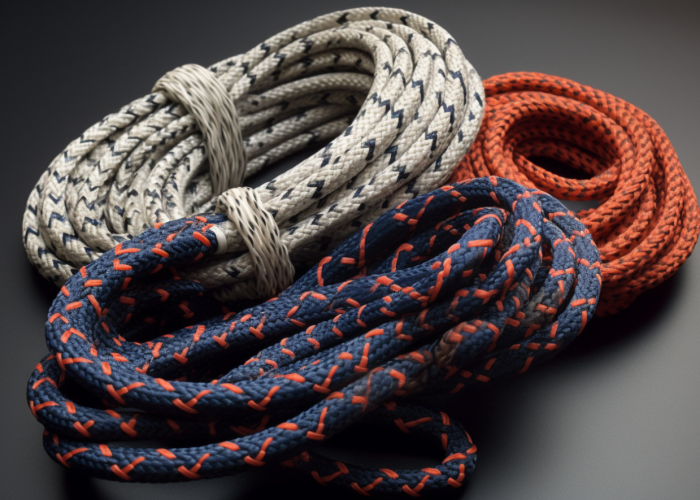
Rescue strap treatment requirements include regular cleaning with mild detergents, proper storage in dry environments away from excessive moisture, routine inspection for wear and tear, and application-specific flame retardancy treatments. These maintenance protocols ensure optimal performance and prevent premature degradation of critical safety components.
Rescue straps require cleaning after every significant use or at minimum quarterly intervals using pH-neutral detergents (6.5-7.5 pH). Hand washing in water below 105°F removes contaminants without degrading synthetic fibers, followed by air-drying at room temperature for 6-8 hours. Avoid bleach, fabric softeners, and machine washing, which can reduce strap strength by 15-30% through chemical or mechanical damage.
Proper rescue strap storage requires cool, dry environments with 40-60% relative humidity and temperatures between 50-75°F. Direct sunlight exposure must be avoided as UV degradation reduces strength by 5-10% annually. Store straps loosely coiled in 12-18 inch diameter loops or hung with even weight distribution to prevent stress point development that can reduce breaking strength by up to 25%.
Rescue strap inspection follows a three-tier schedule: visual checks before each use, detailed tactical inspections quarterly, and comprehensive testing annually. Examine webbing for cuts exceeding 5% of width, abrasions penetrating more than 15% of thickness, and heat damage indicated by glazed fibers or discoloration. Document inspections according to NFPA 1983 or equivalent standards for liability protection.
Flame-retardant rescue straps must meet NFPA 1983 standards with self-extinguishing properties within 2.5 seconds of flame removal. All rescue straps used in firefighting applications require either inherently flame-resistant materials (Nomex/Kevlar) or chemical treatments certified to maintain 75%+ breaking strength after 15-second flame exposure, with recertification typically required every 2-3 years depending on usage frequency.
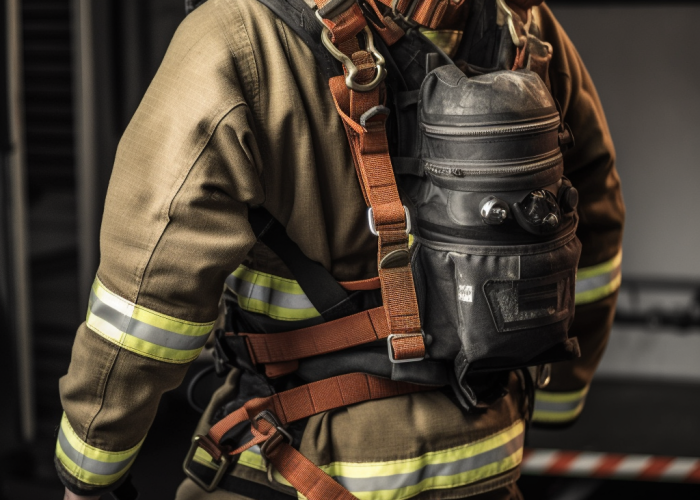
Choosing the right rescue strap requires evaluating five key factors: rescue environment, required strength rating, appropriate dimensions, webbing type, and specific safety certifications. Confined space rescues need narrow profile straps with multiple attachment points, while aerial evacuations demand maximum strength ratings of 8,000+ lbs and specialized hardware configurations.
Rescue environments dictate specific strap requirements based on four primary variables: access constraints, environmental hazards, victim condition, and extraction complexity. Confined spaces require narrow-profile straps (1-2 inches) that navigate 16-24 inch openings, while fire environments demand flame-resistant materials tested to withstand 400°F+ temperatures. Water rescues need quick-draining designs with corrosion-resistant hardware maintaining full functionality after saltwater exposure.
Rescue strap strength requirements follow a minimum 5:1 safety factor standard—multiplying expected load by five to determine minimum breaking strength. A 200-pound victim requires a 1,000-pound rated system minimum, with professional applications typically employing 5,000-8,000 pound ratings. Dynamic loading during falls can multiply effective forces by 2-3 times, requiring appropriate strength margin calculations based on maximum anticipated forces.
Rescue strap dimensions must match specific operational requirements with length calculated as maximum extraction distance plus 30% safety margin. Width selection follows a pressure distribution principle—narrower straps (1-2 inches) generate 4-6 psi during suspension while wider designs (3-5.75 inches) reduce pressure to 1.5-2 psi, critical when victim suspension exceeds 5-10 minutes and compartment syndrome risk increases significantly.
Webbing selection impacts rescue strap performance with flat webbing providing 15-25% higher breaking strength and tubular webbing offering 30-40% better flexibility. High-load applications exceeding 500 lbs typically utilize flat webbing for maximum stability, while technical rescues requiring frequent manipulation over rough surfaces benefit from tubular webbing’s superior handling characteristics and reduced edge abrasion.
Rescue strap certification ensures compliance with rigorous testing standards including NFPA 1983 (fire service), ANSI Z359.4 (fall protection), and EN 1498 (rescue harnesses). Certified equipment undergoes breaking strength tests with 5:1 safety factors, abrasion resistance testing (minimum 5,000 cycles without significant degradation), and environmental performance verification across operating temperature ranges (-40°F to 180°F for standard applications).
Selecting the proper rescue strap requires understanding specific application requirements, material characteristics, and safety standards. By choosing appropriate dimensions, webbing type, and materials certified for your rescue environment, you ensure optimal performance when lives depend on reliable extraction equipment. Always prioritize certified products with documented testing from established manufacturers.
Rescue straps typically last 3-5 years under normal use conditions. However, actual service life depends on usage frequency, exposure to environmental elements, and proper maintenance. Straps used in harsh environments (high heat, chemical exposure, abrasion) may require replacement every 1-2 years, while properly maintained straps used infrequently can last up to 7 years.
Standard rescue straps have weight capacities between 1,000-4,000 pounds safe working load with breaking strengths of 5,000-10,000 pounds. One-inch nylon webbing typically supports 600-800 pounds safely, while two-inch widths support 1,200-1,600 pounds. Always verify the manufacturer’s specific ratings as construction methods significantly impact capacity.
No, rescue straps and fall protection equipment serve different purposes despite similar materials. Fall protection equipment is designed primarily to prevent falls and absorb shock loads, featuring dynamic elongation properties. Rescue straps focus on extraction and transportation with limited stretch characteristics and specialized attachment configurations designed specifically for victim handling.
Yes, specific rescue straps are designed for dual-orientation use in both horizontal and vertical rescues. Multi-configuration designs include reinforced attachment points oriented for both directions, with load ratings clearly marked. However, specialized straps perform better in specific orientations—Hurtman Rescue Straps excel vertically while hasty rescue straps with drag handles perform better horizontally.
Rescue straps feature specialized construction with reinforced stitching patterns (typically 5-7 bar tacks at stress points), certified hardware components, and application-specific designs. Unlike general purpose webbing, rescue straps undergo rigorous testing to industry standards, include proper load ratings, and incorporate features like padding, multiple attachment points, and specialized hardware configurations for emergency use.
Quality control during rescue strap manufacturing includes three critical tests: breaking strength verification on random samples from each production batch, hardware attachment pull testing to 150% of rated capacity, and UV resistance testing simulating 500 hours of exposure. Each strap undergoes 100% visual inspection for stitch integrity, dimensional accuracy (±2mm tolerance), and proper hardware functionality before certification.